Seawater Desalination
Desalination of sea (or saline) water has been practiced for over 40 years and is a well-established means of water supply to residential communities, efficient agriculture and industrial development in many countries. It is now feasible, technically and economically, to produce large quantities of water at excellent quality from desalination processes.
Desalination is the process of separation of water from dissolved impurities. Part of the water is recovered in comparatively pure form in a “product” stream. The dissolved impurities are concentrated in a waste stream (“brine”), which is discharged from the desalination system.
Nowadays the dominant desalination technology all over the world is based on membrane filtration techniques using the principal of Reverse Osmosis. The selection of a desalination process for a specific application requires consideration of both technical and economic factors. The technical evaluation identifies the feasible processes for each application; the economical evaluation is an additional input to ranking the feasibility model.
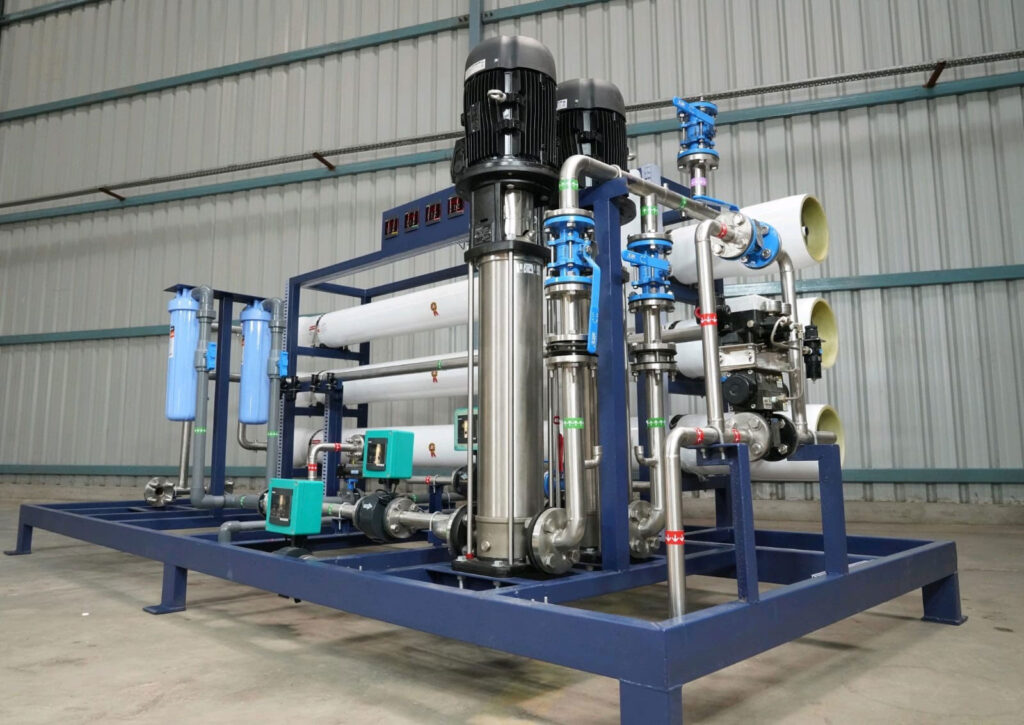
Seawater Intake
Pre-treatment
Reverse Osmosis
Re-mineralisation
Brine Discharge
How it Works

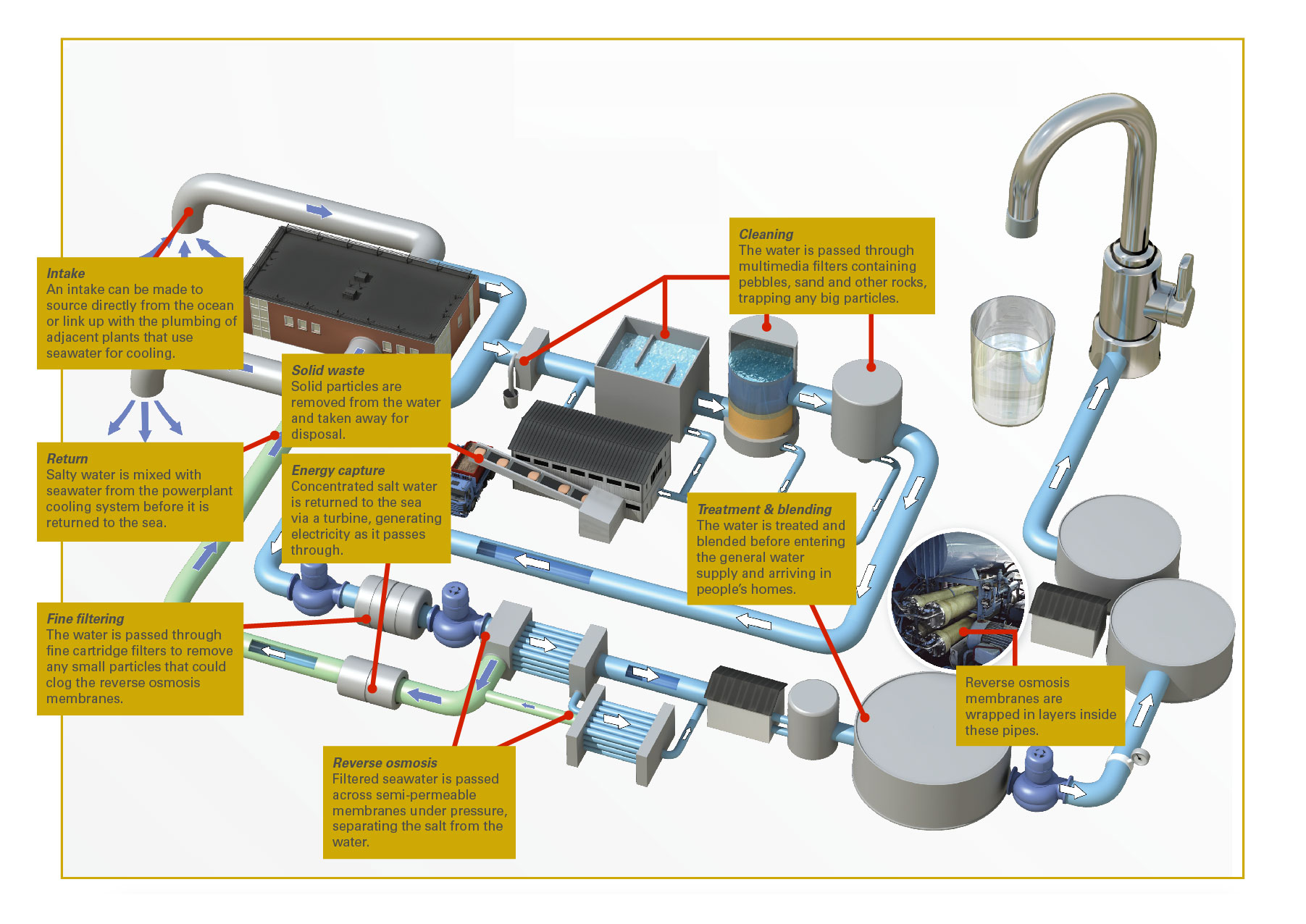
Overview & Facts
97% of the world’s reserves consist of water.
![]()
10% per year: the growth rate of the water and brackish water desalination market over the past 5 years.
 Desalinated water is used for drinking water for human consumption and utilities such as irrigation of green areas, urban cleaning, agriculture (55%) and to cover water needs in most industrial processes (42%).
Desalinated water is used for drinking water for human consumption and utilities such as irrigation of green areas, urban cleaning, agriculture (55%) and to cover water needs in most industrial processes (42%).
![]()
As nearly 60% of the world’s population lives less than 100km away from the maritime coast, desalination has become a viable alternative resource for present and upcoming decades.
By 2030, half of the world’s population will have water stress due to population growth – this represents a surge in usage conflict.
It is estimated that total water demand will more than double by 2050.
![]()
Desalination is an important part of the long-term solution to South Africa’s unpredicted rainfall patterns.
Reverse Osmosis
The following figure describes the various desalination technologies common in commercial use today and the applicability of each technique. It is apparent that Thermal Distillation and Reverse Osmosis techniques are most suitable for seawater desalination application. Nevertheless, thermal evaporation of seawater is energy intensive and much more expensive than SWRO:
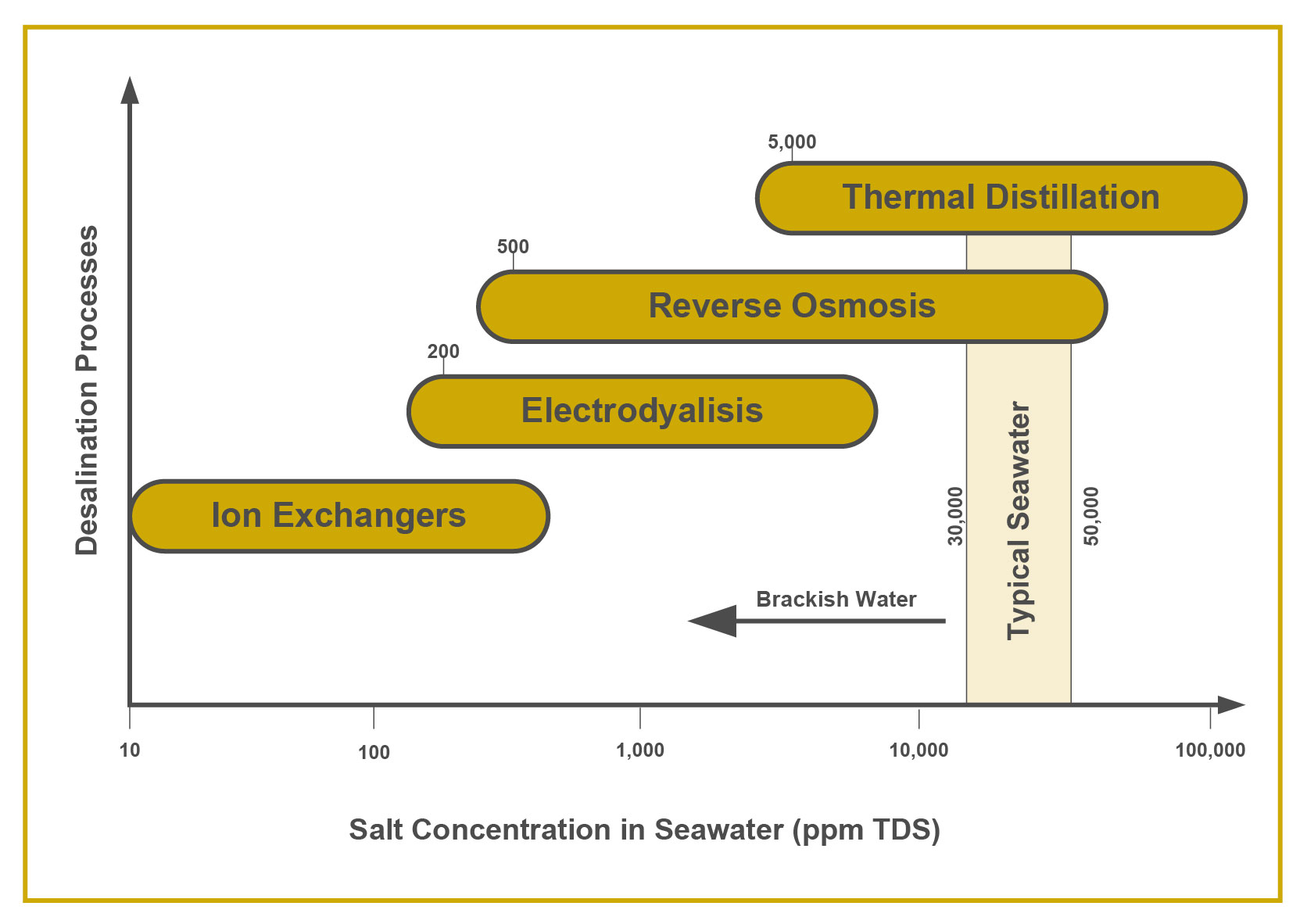
Applicability of water treatment techniques to seawater desalination
The following figure describes the applicability of various desalination technologies in different applications:

Applicability of Thermal and RO techniques to different product water
Clearly, seawater desalination by RO is the most appropriate for production of good quality drinking water from seawater.
Membrane Desalination
Reverse Osmosis (RO) is a fast-growing technique in water desalination. Traditionally popular in brackish water desalination applications, it is now also common as a seawater desalination technique. RO usage for large-scale commercial applications of seawater desalination has been practiced for the past three decades.

Principles of Operation
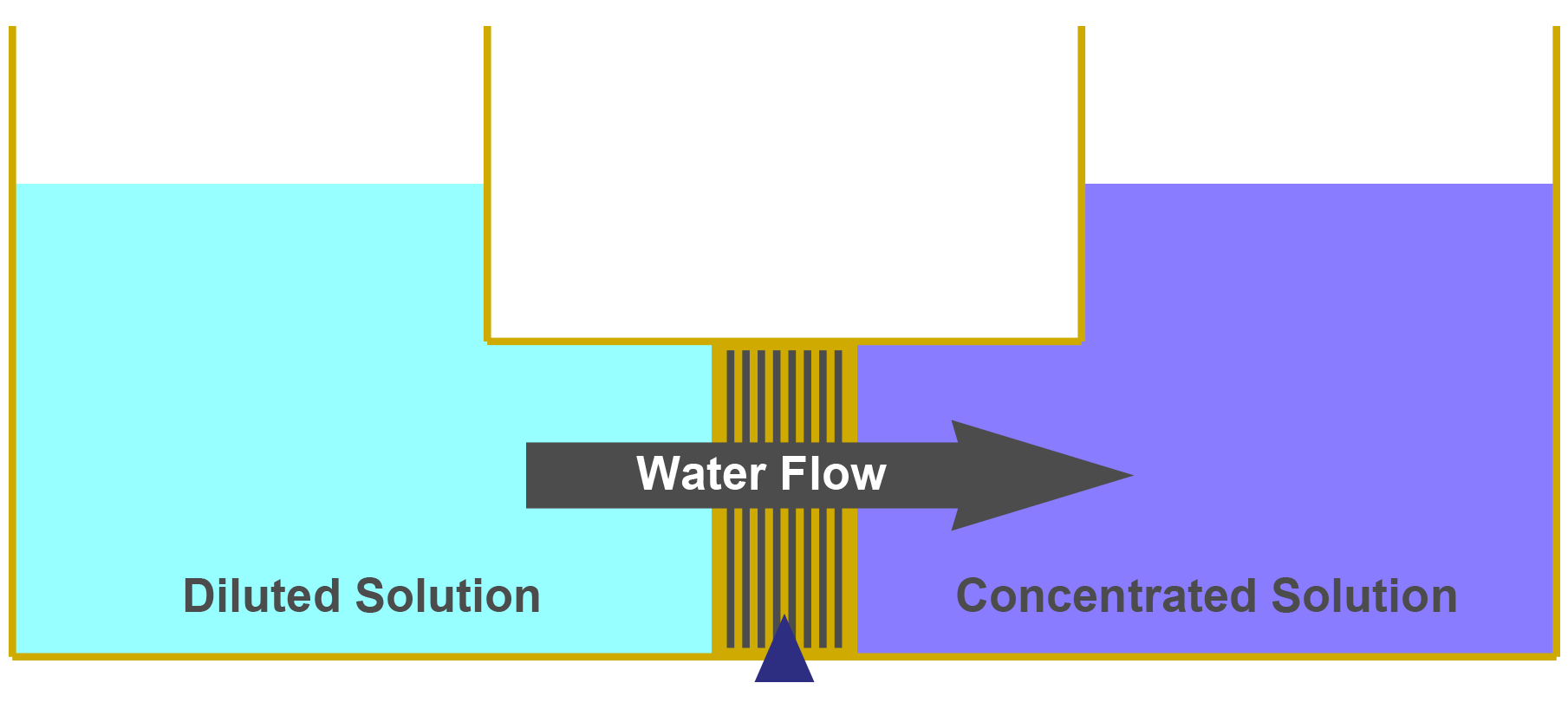
The reverse osmosis (RO) process applies pressure to the feed seawater, forcing the water molecules through semi-permeable membranes. The membrane is specifically constructed to selectively pass water, but is almost impermeable to the dissolved impurities. Thus, most of the dissolved impurities remain behind and are discharged in a waste stream (brine). The water that has passed through the membranes leaves the RO unit as product water.

Reverse Osmosis plants utilise electrical power as an energy source and operate at ambient temperatures. In RO, a fraction of the water content of seawater is driven under pressure through a semi-permeable membrane, generally of organic material. As the name of the process implies, the driving force must exceed the osmotic pressure of the brine (which equals about 65~70 bars for typical seawater). Thus, most of the energy required for RO desalting is used for pressurising the feed water.
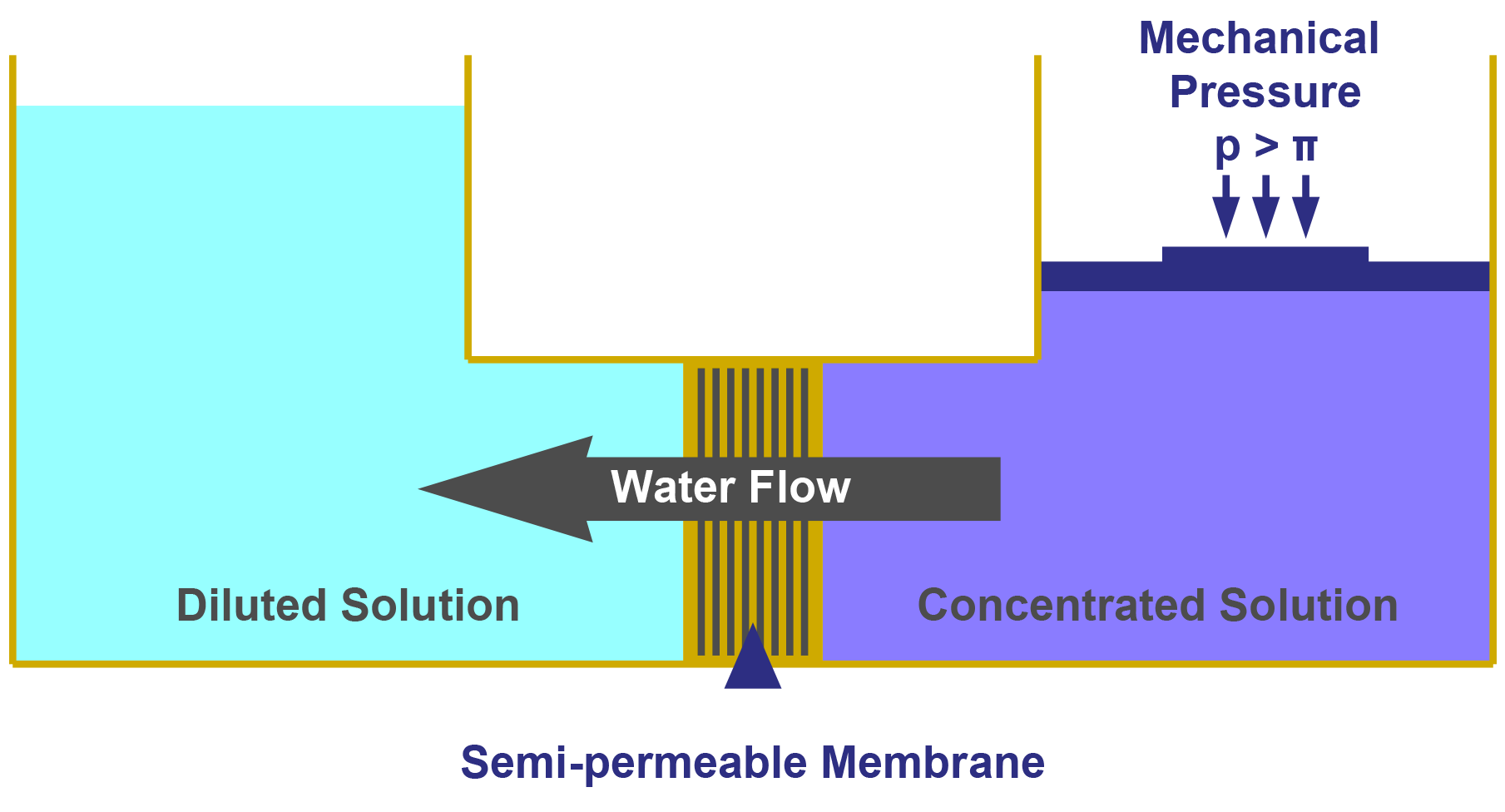
Even perfect RO membranes experience a dynamic balance between the flow of pure water molecules and the diffusion of inorganic ions. This permits a wide range of salt passage, defined as the ratio of salt concentration in the product to salt concentration in the feed.

Our founding principle
“Liberty is the right to have basic services, freedom is to have access to such services.”
